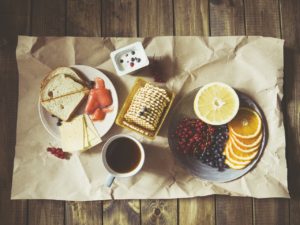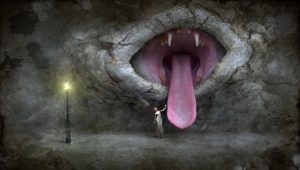
Review
Smell plays a big part in your ability to taste. The bumps on your tongue that you can see are actually papillae.
4 Types of Papillae
Filiform
Filiform papillae are the most numerous papillae and are arranged in regular rows running parallel to the median sulcus. They are cone-shaped – either a single cone (like a volcano shape) or a frill of cones. These papillae don’t actually taste flavors but they do sense touch. They work as cleaners, helping your tongue create friction with other parts of your mouth to loosen bits of food from the nooks and crannies.
Foliate
These papillae are located on the sides of the tongue near the back. They are flat, leaf-like folds, and can be visible in some people. These papillae contain taste buds for flavors.
Fungiform
These are mushroom-shaped. They are scattered all over the tongue but seem to be more concentrated on the edges and tip of the tongue. They contain taste buds for flavor as well as the sense of touch.
Vallate (Circumvallate)
These papillae are dome-shaped with a border. The best description is that they appear as a circular fort with a mote around it and then a wall on the outside. Or maybe they look like a bunch of “outie” belly buttons! They are laid out on the back of the in a V-shaped pattern, pointing towards the back of the throat. These papillae can be visible in some people, and they contain taste buds for flavors as well.
Each papilla contains many taste buds. They are called “buds” because, microscopically, they appear as unopened rosebuds. Taste buds have a swirl-like funnel with an opening in the middle that contains fluid.
How You Taste
You put food in your mouth. Your saliva dissolves bits of it to free up molecules. The molecules that are mixed in your saliva wash into the funnels of each taste bud. There, the molecules mix into the taste bud fluid and get swirled around to come in contact with as many taste sensors (nerves) as possible. From here, the chemical signal changes into an electrical signal as the taste messages zoom into your brain. In the brain, the signal is translated and identified – including details such as flavor, pain, temperature, texture, intensity, and smell (while your saliva mixes with some molecules, other molecules are released into the air as aromatics and contact the olfactory sensors in your nose).
Taste Buds Map Truth
The taste bud map that has been used for years in textbooks was created in 1901. Even with all the things that we’ve learned about how taste buds work, where they’re located, and what they look like, this map has never been re-written. The original map identified four basic flavor categories: sweet, sour, salt, bitter. Yet, just nine years later, the Japanese were able to identify “umami” – that savory flavor that doesn’t quite fit into the other four. Yet, the map still wasn’t re-written. Even now, scientists are learning and updating the database on what the tongue can taste and how – including categories like “fatty” and “metal” and even “water”.
So, while the taste buds are not grouped into sections based on the flavor they can taste, some taste buds may have a greater affinity or sensitivity to a certain type of flavor.
It is estimated that we have about 2000-4000 tastebuds, and since the surface of the tongue is like your skin, the tastebuds recycle about every week or two. This rapid and continuous recycling might be why it is acclaimed that your taste (preference and enjoyment from your taste buds) changes approximately every seven years.
Conclusion
Even though the tastebud categories are still too complicated to rewrite the map, I still plan to use my taste buds to their fullest potential. Eat up!
Resources
I gathered some of my information from a PubMed article that is actively being updated by real scientists – How Does Our Sense of Taste Work?
Callback
Smell
Connect with me
Support us on Patreon
Give us your Feedback
Join the Pharmacist Answers Podcast Community on Facebook
Subscribe: iTunes, Stitcher, GooglePlay, TuneIn Radio
Like the Facebook page
Music Credits: Up In My Jam (All Of A Sudden) by – Kubbi https://soundcloud.com/kubbiCreative Commons — Attribution-ShareAlike 3.0 Unported— CC BY-SA 3.0 http://creativecommons.org/licenses/b…Music provided by Audio Library https://youtu.be/tDexBj46oNI





